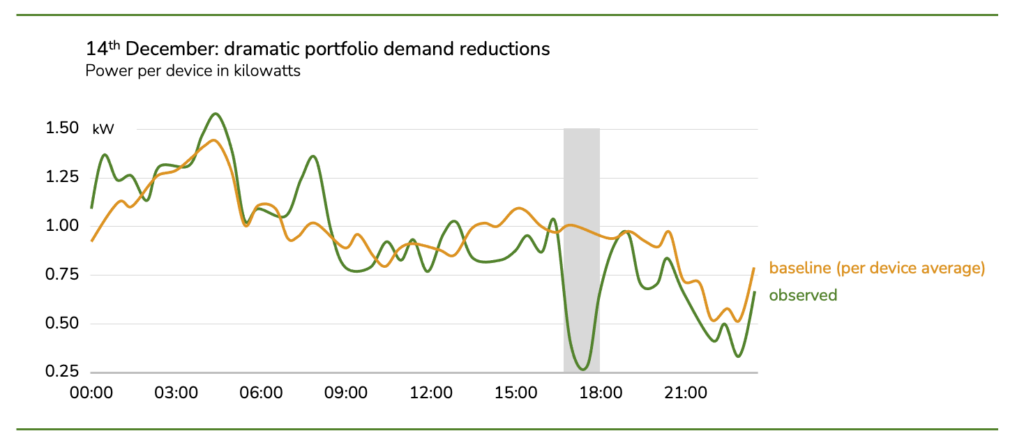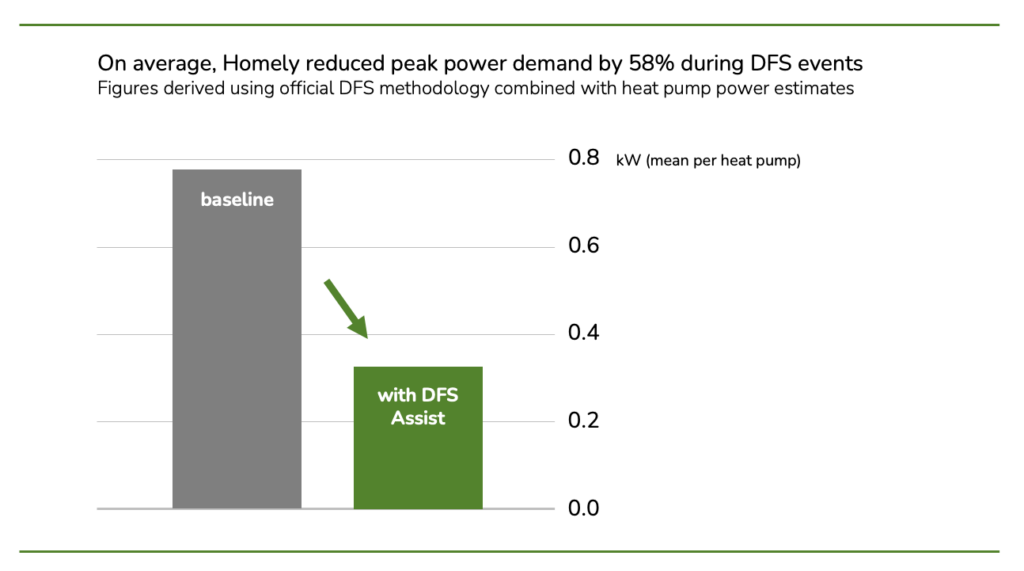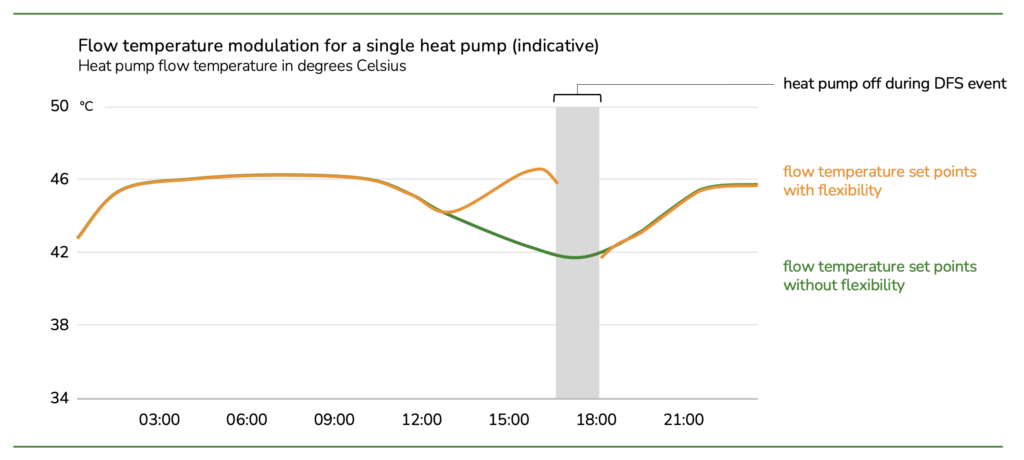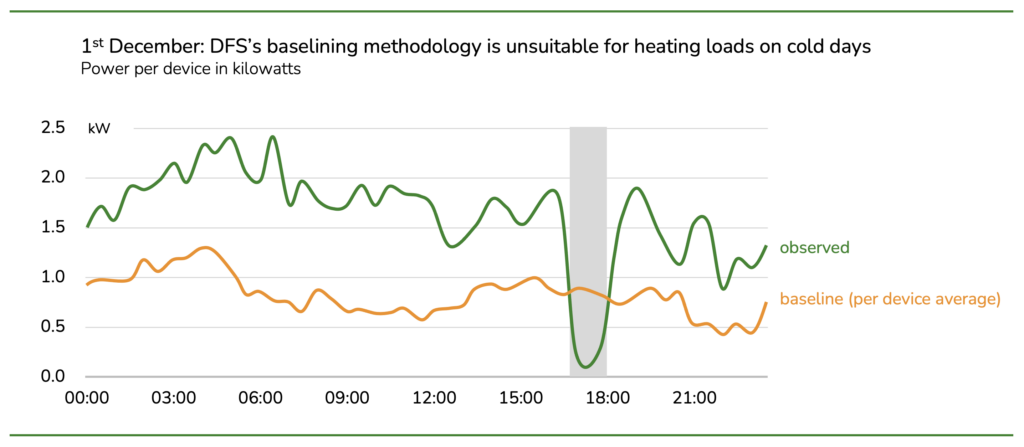The Future of Heat Pump Flexibility is Here – Slash Peak Demand By 60%

Homely DFS Assist results show large reductions in heat pump peak power demand with no compromise in household comfort
For the second year in a row, our closed beta Homely DFS Assist service has demonstrated that heat pumps can intelligently “flex” demand in response to grid signals, automatically rewarding participants without any comfort penalty.
This confirms that Homely’s optimisation technology is the leading way to make a heat pump truly “smart” in the way the energy system needs.
This year, the average load reduction achieved was 440 watts per participant, with higher reductions on colder days (more on this below!).

What Happens When We've All Got Heat Pumps and Electric Vehicles?
It’s a common question, and one that National Grid ESO, the electricity system operator, is preparing for. Forecasts suggest that domestic heat pumps could be responsible for an impressive 10 GW of peak electricity demand within the next ten years1. To put this in perspective, the highest demand recorded in 2023 was only 44 GW (on January 23rd).2
No wonder the ESO is keen to make heat pumps “smart”:
“Heat pumps must be smart from the outset to allow them to effectively move their use in line with market prices and other signals, providing financial savings for consumers.” – National Grid ESO, November 2020
At Homely, we believe the ESO is absolutely right, and we are committed to being part of the solution.
Demand Flexibility and Heat Pumps
ESO’s Demand Flexibility Service is a first-of-its-kind scheme rewarding households for reducing peak household demand on specific winter dates. But how do people with heat pumps participate in such a scheme?
Most approaches rely on:
- Asking people to manually intervene, such as by turning their pump off, or adjusting set points on the day; and/or
- Asking people to tolerate less heating, with a leading study finding that 57% of participants suffered “discomfort” as a result of flexibility3.
We believe these demands are unnecessary, and in fact will actively hamper the uptake of much-needed heat pump flexibility.
Homely DFS Assist
Here’s how Homely DFS Assist leverages Homely’s unique understanding of heat pumps and the thermal characteristics of individual homes to deliver flexibility cost-effectively:
- Households sign up to participate with a specific “provider” (typically their energy supplier).
- Homely detects flexibility events automatically and plans accordingly to keep houses warm. This generally involves gradually modulating scheduled heat pump flow temperatures upwards over many hours before the “event” to keep the cost of preheating low.
- During the event, the heat pump turns off as long as the house remains above the set temperature, always prioritising comfort.
This approach proved simple but hugely powerful, reliably delivering big savings in peak demand to the energy system, and big financial rewards to participants.

Findings
Tech-enabled approach leads to high sign-up and even higher participation
- Event participation was exceptionally high (98% of signed-up participants), much higher than any opt-in approach can achieve.
- Participants reported that Homely DFS Assist made participating in DFS events “effortless”, with most relying solely on the tech without making any other behavioural adjustments.
- Average turn-down was 440 W over the course of the season: a 58% reduction in load compared to baseline
The savings vary – houses with higher heat loss have higher heat demand and can “save” more through schemes like DFS. Our top participant earned over £60 from his energy supplier purely by participating in eleven DFS events.
Picking data from any event shows that heat pumps can significantly contribute to grid flexibility schemes.

Baselining Methodologies Need to Account for Weather
Baselining is crucial. When measuring demand reduction, defining “what would have happened anyway” is essential. The DFS in 2022/23 used a baselining methodology with an “in-day adjustment” factor to account for weather. The idea was to use historic data to construct a basic power curve, then adjust it based on external factors like weather.
However, this proved too easy to game, and some customers were rewarded unfairly for artificially inflating their baseline. The “in-day adjustment” was removed for 2023/24. Nevertheless, Homely’s data shows that some weather adjustment is vital for fair heating flexibility rewards. On cold days, actual heating demand is much higher than the calculated baseline, undervaluing flexibility. On warmer days, the opposite is true, though flexibility is less likely to be needed on warmer days.
Therefore, we are confident that the “true” savings heat pumps can deliver are significantly greater than the 440 W per person we report here.
Heating Flexibility Costs Money
Delivering heating flexibility is not free (unlike, for example, EV charging flexibility). Homely keeps heating bills low by calculating the absolute most efficient way to heat each house based on its individual characteristics.
For most houses, on cold days this involves running the heat pump nearly constantly – operating “low and slow” to minimise overall energy consumption.
There is a hidden financial cost in delivering flexibility, and all heating flexibility providers must ensure that benefits to the end user outweigh the delivery costs.

References
- National Grid ESO | Future Energy Scenarios 2023
- National Grid ESO | Britain’s Electricity Explained: 2023 Review
- Utility Week | Heat pump flex trials cause half of customers ‘discomfort’ | 26th March 2024
Partner with Homely
If you are interested in partnering with Homely to bring heat pump demand side response (DSR) services, including DFS, to your customers, please fill in this form and one of the team will be in touch shortly to discuss.
